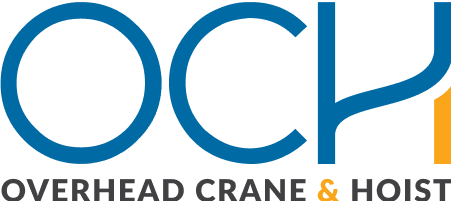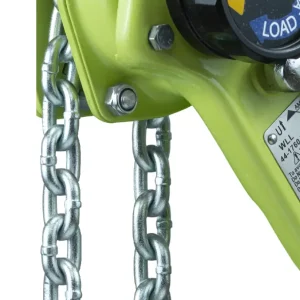“Even if an operator understands how to manipulate a load so as to prevent snagging, adding load snag detection technology can help avoid accidents or damage to wire rope hoists, crane components, or facility structures,” said Jeff Griesemer, Vice President of Engineering and General Manager at American Crane and Equipment Corp.
Four Common Load Snag Scenarios
There are generally four different scenarios in which a load can become snagged, continued Griesemer. He described them as follows:
- When the load remains partially attached to its supporting structure. “An example would be a turbine rotor that does not have all its bolts removed prior to initiating the lifting sequence,” Griesemer said.
- When a stationary object obstructs the path of the load, the crane, the hoist, or any of the rigging components as the lift initiates.
- When the trolley or bridge is traveling with a suspended load and the load catches a stationary object. “This interrupts the traversing motion, and would be considered a snag,” he explained.
- When a two-blocking condition occurs. “In this scenario, one or all of the limit switches in the raising direction either fails or have not been adjusted properly,” said Griesemer. “This allows the lower block to come into direct contact with the structure that supports the upper block. Hence the term ‘two-blocking.’”
Griesemer noted a key difference among the snagging scenarios that happen during load movement.
“Some occur when the load is already suspended and therefore the hoisting motion is stationary; it’s the trolley or bridge motion that causes the snag condition,” he explained. “Others occur when the hoist is in motion with a suspended load.”
Load Snag Detection Technologies
Most systems developed to detect a snag condition that interferes with trolley bridge motion are based on monitoring their wire rope angles. These systems detect an obstruction in the load path during trolley and bridge or any traversing motion, said Griesemer. The load snag detection system stops the traverse motion when the hoist rope’s angle exceeds the set point of the detection device.
“Hoist motion snagging can be a bit more complicated due to the presence of hoist drivetrain inertia, most of which typically resides in the hoist motor rotor and brake systems,” he continued. “The corresponding energy associated with this inertia can be difficult to manage adequately before damage occurs.”
Inertial energy is what tends to cause damage to wire ropes and supporting structures during a snag condition. Structures can pinch or crush wire ropes if they make physical contact. Or they may rupture due to physical overload.
“Most systems developed to detect a snag condition resulting from hoist motion are based on either friction clutches or hydraulic dampers,” noted Griesemer. “The energy created by the rotating inertia must be dissipated quickly to prevent considerable damage to the crane and or supporting structure components.”
Regardless of the type of load snag detection system used, the speed of the system’s response time is the critical factor in limiting or preventing damage. Griesemer advised operations to discuss the different options for snag detection with their crane and hoist supplier to determine the optimal methodology for a given application.
Improve Overhead Crane Safety and Productivity with Other Technologies
In addition to load snag detection systems, there are multiple other optional features available to enhance both safety and productivity in overhead lifting.
An Overhead Alliance webinar details a variety of smart crane technologies — such as those that minimize load sway, mitigate off-center lifts, alert operators to potential collisions, and more. The “Overhead Lifting Safety Innovations Panel Discussion” helps overhead crane and hoist operators, maintenance personnel, owners, safety professionals, purchasers, and specifiers explore some of these solutions. It also covers approaches that address the safety and productivity challenges associated with overhead lifting.
Meet the Overhead Alliance
MHI’s Overhead Alliance includes the Crane Manufacturers Association of America (CMAA), the Hoist Manufacturers Institute (HMI), and the Monorail Manufacturers Association (MMA). All three industry groups are a part of the Occupational Safety and Health Administration’s (OSHA) Crane, Hoist and Monorail (CHM) Alliance. Through this collaboration, the organizations provide information, guidance, and access to training resources. These tools help protect the health and safety of worker using hoists, cranes, and monorails. For more information, visit mhi.org/solutions/overhead-alliance.





